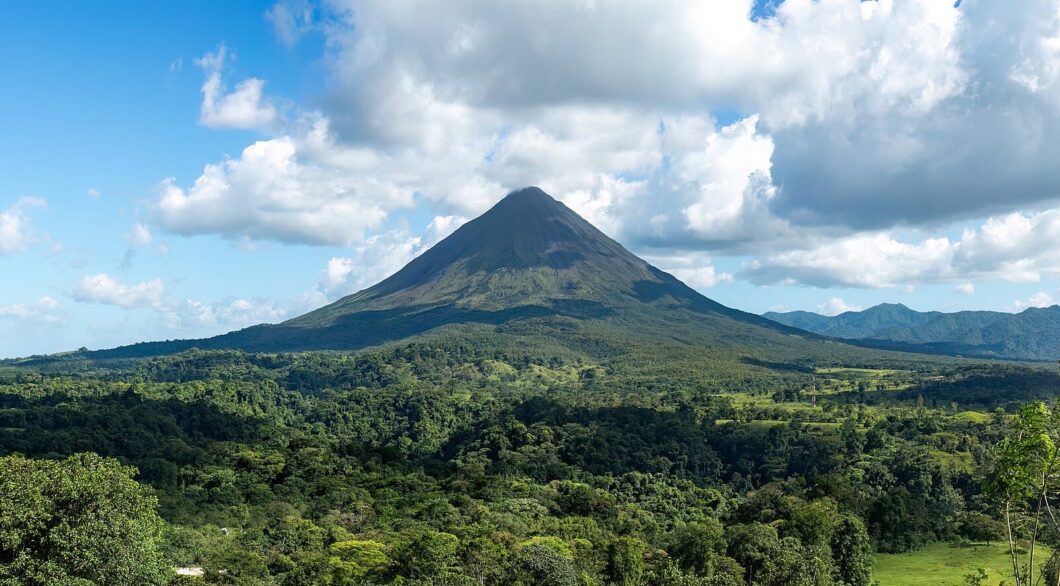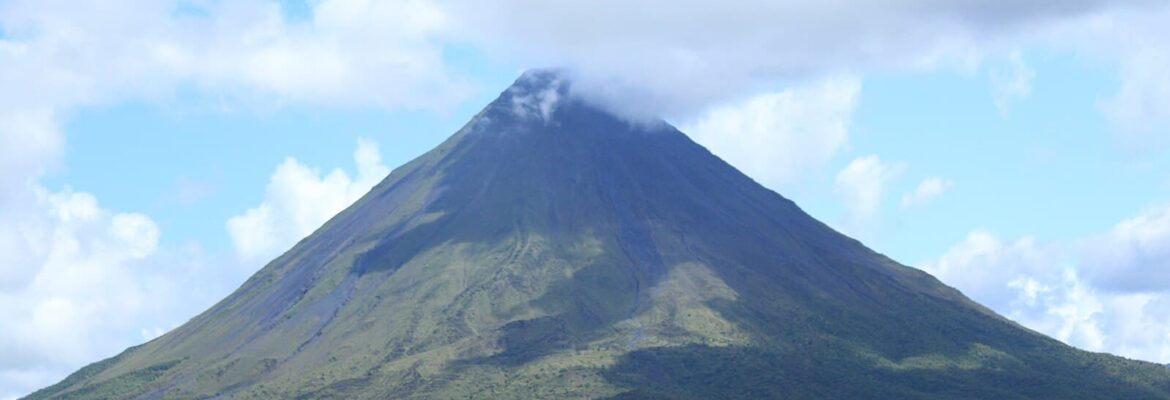Posted on Jun 20, 2025 by Hanna DuBuque
Costa Rica has achieved something remarkable in the energy world. The country has been running on over 94% renewable electricity since 2014, with some years reaching 99% clean energy generation. It’s a green energy success story that most nations can only dream of – a small Central American country powering itself almost entirely without fossil fuels.
But here’s the fascinating part: while Costa Rica has mastered the art of clean electricity, there’s a glaring gap in its renewable portfolio. The current energy mix heavily favors hydropower at about 70%, followed by geothermal at roughly 13%, with wind energy contributing just over 10%. Despite tripling its wind capacity from 128 MW in 2011 to 408 MW in 2023, wind remains the underachiever in Costa Rica’s renewable family.
This seems puzzling for a country blessed with trade winds from two oceans and a mountainous backbone that could naturally accelerate airflow. Studies suggest Costa Rica could supply all its energy needs by utilizing just 25% of its wind power potential – a massive untapped resource hiding in plain sight.
The real opportunity isn’t just about adding more turbines to the grid. It’s about understanding how Costa Rica’s unique volcanic landscape creates wind patterns that could revolutionize the country’s energy independence. Those towering peaks and crater formations aren’t just geological wonders – they’re natural wind accelerators waiting to be harnessed. And with Costa Rica planning to invest $540 million in combined solar and wind projects by 2026, the timing couldn’t be better to explore this volcanic-wind connection.
The Volcanic Backbone of Costa Rica
Costa Rica sits atop one of the most geologically active regions on Earth. The country’s dramatic topography is shaped by more than 200 volcanic formations, with 112 clearly identified structures ranging from towering active peaks to ancient, forest-covered domes. This volcanic landscape isn’t just a tourist attraction – it’s the geological engine that could power Costa Rica’s wind energy future.
The country’s volcanic spine consists of two primary mountain ranges. The Central Volcanic Range (Cordillera Central) runs through the heart of the country from the Central Valley eastward, housing giants like Irazú (the country’s tallest volcano at 3,432 meters), Poás, Barva, and Turrialba. Meanwhile, the Guanacaste Cordillera stretches along the northwestern border with Nicaragua, featuring peaks like Miravalles, Tenorio, and the legendary Rincón de la Vieja.
But it’s the individual volcanoes that tell the most compelling story for wind energy potential. Arenal Volcano, perhaps Costa Rica’s most iconic peak, stands 1,657 meters tall in the Cordillera de Tilarán and exemplifies how volcanic geography creates unique wind opportunities. Until 2010, Arenal was the country’s most active volcano, and its perfect conical shape makes it a centerpiece for visitors exploring Arenal Volcano Costa Rica tours.
The volcano’s strategic location between Lake Arenal and the Tilarán Mountains creates natural wind corridors that are already being harnessed – Lake Arenal supplies 12% of the country’s hydroelectric power while wind farms on the opposite side catch strong gales across the mountain range.
Poás Volcano, rising 2,708 meters in the Central Highlands, remains one of Costa Rica’s most active volcanoes with a crater nearly a mile in diameter. Its elevation and consistent volcanic activity create thermal updrafts and pressure differentials that could enhance wind patterns. Meanwhile, Turrialba, the country’s second-tallest volcano at 3,328 meters, has been particularly active since 2007, creating ash plumes that demonstrate the powerful air currents moving around these peaks.
In Guanacaste Province, Rincón de la Vieja stands as the largest volcano in the range at 1,916 meters. This 600,000-year-old giant features nine volcanic craters and is surrounded by geothermal activity that influences local air temperature and pressure systems. The nearby Miravalles Volcano, at 2,028 meters, is already proving the energy potential of volcanic landscapes – it hosts Costa Rica’s largest geothermal field, generating 163 MW of power.
These volcanic peaks aren’t randomly scattered across the landscape. They form a continuous backbone that runs roughly northwest to southeast, creating a natural barrier that intercepts and redirects the trade winds flowing across Costa Rica from the Caribbean Sea. This volcanic spine is what transforms Costa Rica from a flat coastal plain into a wind energy goldmine.
How Costa Rica Volcanoes Create Wind
The science behind volcanic wind acceleration is elegantly simple, yet the effects are profound. When trade winds carrying moist air from the Caribbean encounter Costa Rica’s volcanic peaks, they’re forced upward in a process called orographic lift. As air masses hit these mountain barriers, they have nowhere to go but up, accelerating and creating the kind of consistent, predictable wind patterns that wind energy developers dream about.
Costa Rica’s position just north of the equator places it directly in the path of the northeast trade winds. These consistent airflows, generated by the global pressure gradient between the subtropical high-pressure systems and the Intertropical Convergence Zone, blow steadily from the Caribbean toward the Pacific. Under normal circumstances, this air would flow unimpeded across a flat landscape. But Costa Rica’s volcanic backbone changes everything.
As the moist Caribbean air hits volcanic peaks like Arenal, Poás, or Rincón de la Vieja, the mountains act like natural wind accelerators. The air is forced upward along the windward slopes, compressing and speeding up as it navigates around and over these volcanic obstacles. This creates several wind phenomena that are perfect for energy generation: accelerated flows over ridgelines, consistent pressure differentials between windward and leeward slopes, and concentrated wind corridors through mountain passes.
The Papagayo Jet is perhaps the most dramatic example of this volcanic wind acceleration. When cold high-pressure systems from North America meet warm, moist air over the Caribbean, the resulting winds are funneled through mountain passes in the Cordillera. These jet winds can reach speeds of 20 meters per second (72 km/h) with gusts up to 30 meters per second (110 km/h) – speeds that make wind energy developers salivate.
But it’s not just about speed. The volcanic topography creates remarkably consistent wind patterns throughout the year. During Costa Rica’s dry season (December to April), the northeast trade winds are strongest and most consistent. The volcanic peaks force this air upward on the Caribbean-facing slopes, creating reliable wind flows that could power turbines year-round. On the leeward (Pacific-facing) slopes, the air descends and warms, creating different but equally predictable wind patterns.
The mountain passes and valleys between volcanic peaks act as natural wind corridors, concentrating and accelerating airflow. Lake Arenal, nestled between volcanic ridges, experiences such consistent winds that it’s already become a windsurfing destination. These same winds currently power wind farms on the lake’s shores, demonstrating the practical energy potential of volcanic wind patterns.
Temperature differentials created by volcanic activity add another layer to wind generation. Active volcanoes like Rincón de la Vieja generate heat that warms the surrounding air, creating thermal updrafts and local pressure systems that can enhance wind flows. Even dormant volcanoes contribute – their dark volcanic rock absorbs more solar radiation during the day than surrounding forests, creating temperature gradients that drive local wind circulation patterns.
The result is a complex but predictable system of wind flows that change throughout the day and season, but remain remarkably consistent year after year. Costa Rica’s volcanic landscape doesn’t just create wind – it creates wind energy opportunities that are waiting to be harvested.
Now I have sufficient information to write the remaining sections and conclusion. Let me draft these final parts:
Costa Rica’s Unique Wind Geography
Costa Rica’s position between two oceans creates a wind energy sweet spot that few countries can match. The Caribbean Sea to the east and the Pacific Ocean to the west generate distinct wind systems that interact with the country’s volcanic backbone in fascinating ways. The northeast trade winds, carrying moisture from the warm Caribbean, blow consistently across the country for much of the year, providing the reliable airflow that wind energy projects crave.
During the dry season (December to April), these trade winds are at their strongest and most consistent. The volcanic Central Valley and mountain passes act as natural wind tunnels, accelerating these Caribbean airflows as they move toward the Pacific. This creates what meteorologists call “gap winds” – concentrated, high-speed airflows that are perfect for energy generation.
Guanacaste Province has emerged as Costa Rica’s wind energy heartland, and it’s no coincidence. The province sits in the rain shadow of the volcanic cordillera, meaning it receives less precipitation but benefits from accelerated wind flows. The existing wind farms clustered around Lake Arenal and the Tilarán Mountains demonstrate this potential – areas where volcanic topography naturally channels and accelerates the trade winds.
The Central Valley gaps represent another untapped opportunity. The spaces between volcanic peaks create natural corridors where air pressure differentials generate consistent winds. These areas, closer to Costa Rica’s population centers, could provide wind energy with lower transmission costs than remote mountainous locations.
Seasonal patterns add another layer of opportunity. While the Caribbean trade winds dominate the dry season, the wet season (May to November) brings different wind patterns as moisture-laden air arrives from the Pacific. This seasonal variation means wind farms positioned strategically across the volcanic landscape could capture different wind resources throughout the year, maximizing energy generation.
Current Wind Energy Landscape

Despite its natural advantages, Costa Rica’s wind energy development tells a story of untapped potential. The country currently operates about 16 wind farms with a combined capacity of approximately 408 MW – impressive growth from just 128 MW in 2011, but still representing only about 10-12% of total electricity generation.
Most existing wind farms are concentrated in Guanacaste Province, particularly around Lake Arenal and the Tilarán Mountains. The Tejona Wind Power Project, operational since 2003, was Costa Rica’s first major wind installation with 19.8 MW capacity. The Guanacaste Wind Farm, completed in 2009, added another 50 MW with its 55 ENERCON turbines. More recent additions include projects like Altamira (20 MW) and various private developments that have pushed total capacity over 400 MW.
However, wind development has consistently lagged behind hydroelectric and geothermal power for several structural reasons. The Costa Rican Electricity Institute (ICE) has historically favored hydroelectric projects, which made sense given the country’s abundant rainfall and river systems. ICE’s monopolistic control over electricity distribution and generation has created institutional inertia that favors familiar technologies over newer wind developments.
Economic challenges have also slowed wind adoption. While Costa Rica’s 70% reliance on hydropower has provided cheap, reliable electricity, this success has reduced the economic urgency for wind development. Unlike countries facing energy shortages, Costa Rica’s renewable abundance means wind projects must compete not against fossil fuels, but against other clean energy sources that are already cost-effective.
Technical integration presents another hurdle. Costa Rica’s electricity grid was designed around large, centralized hydroelectric plants that provide steady baseload power. Integrating variable wind energy requires grid modernization and energy storage solutions that add complexity and cost. The country’s small size also means transmission infrastructure must be carefully planned to avoid overbuilding.
Regulatory barriers have historically limited private investment in wind energy. While recent laws have opened opportunities for distributed generation and private renewable projects, the permitting process remains bureaucratic. Environmental assessments, land use approvals, and grid connection agreements can take years, discouraging smaller developers from entering the market.
Conclusion
Costa Rica stands at an energy crossroads. The country that revolutionized renewable electricity through hydroelectric power now has the opportunity to revolutionize wind energy through its volcanic geography. The same geological forces that created Arenal, Poás, and Rincón de la Vieja have also created one of the world’s most promising wind energy landscapes.
The path forward is clear: harness just 25% of Costa Rica’s wind potential, and the country could power its entire economy while reducing electricity costs and diversifying its renewable portfolio. The volcanic peaks that already generate geothermal energy and capture rainfall for hydroelectric power can simultaneously accelerate wind flows for a truly integrated clean energy system.
With $540 million in wind and solar investments planned through 2026, Costa Rica is finally positioning itself to unlock this volcanic wind potential. The question isn’t whether Costa Rica can develop its wind resources – it’s whether the country will seize this opportunity to become a global model for integrated renewable energy systems powered by the forces of nature itself.
The volcanoes have been waiting. The wind is ready. Now it’s time for Costa Rica to let its geological gifts power its energy future.




